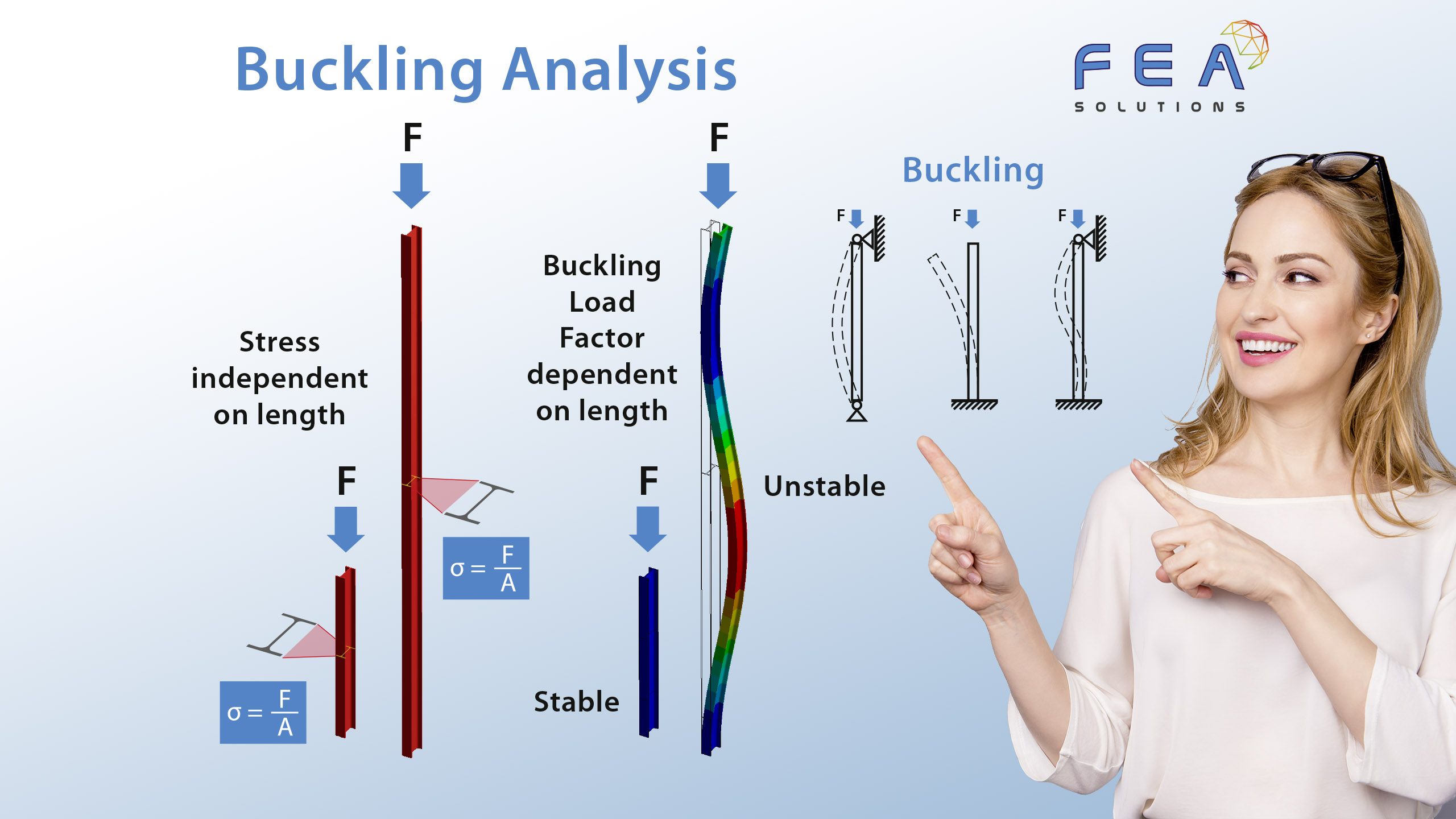
17 Mar Buckling Analysis
When a structure is subjected to a compressive load, failure can occur due the stresses exceeding the material limits or due to buckling (geometric instability). Buckling is the sudden change in shape of a structure under a compressive load. Any further load increase after buckling occurs can cause significant and unpredictable deformations, which may lead to complete loss of the structure’s load bearing capacity, hence may lead to a catastrophic failure.
Buckling can occur at stresses well below a material’s yield stress. For example, when a vertical beam is subjected to a compressive force, the stress in the beam is calculated as the force over the cross sectional area and is independent of its length. However, a long beam buckles much sooner than a shorter beam.
There are three types of buckling analysis:
– Linear Buckling Analysis (https://fea-solutions.co.uk/linear-buckling-analysis/)
– Second Order Buckling Analysis (https://fea-solutions.co.uk/second-order-buckling-analysis/)
– Snap-through Buckling Analysis (https://fea-solutions.co.uk/snap-through-buckling/)
Second order buckling is actually a non-linear stress analysis (https://fea-solutions.co.uk/large-deformation/). Here, buckling of the real-world structure is represented by non-convergence of the numerical simulation. The buckling load is the load just before this convergence failure occurs. A non-linear stress analysis can also be used to evaluate whether snap through buckling (https://fea-solutions.co.uk/snap-through-buckling/) will occur in the structure.
Buckling in plate or sheet components is often called wrinkling.
Please call us today on +44 (0)1202 798991 for any engineering analysis requirements you might have.
